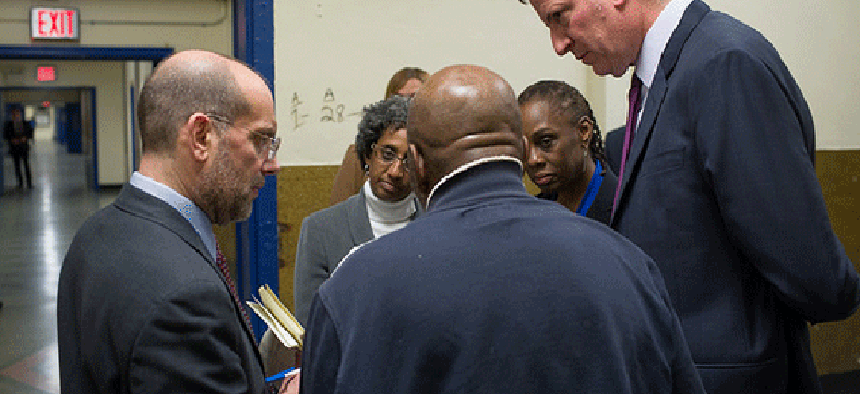Opinion: Let nonprofits take the lead on shelters

Michael Appleton/Mayoral Photography Office
When New York City Mayor Bill de Blasio directed Human Resources Commissioner Steve Banks to conduct a “comprehensive review” of the Department of Homeless Services, one idea that Banks said would be on the table is consolidating the agency and combining it with the Human Resources Administration.
While the mayor downplayed that notion during the initial press conference announcing the Homeless Services agency review – saying that the “most likely outcome” is that the two agencies would remain separate – the notion stuck with me. How much does having that extra layer of bureaucracy deter individuals and families from exiting the shelter system into some semblance of permanent housing?
The Doe Fund attempts to answer that question with a new report that will be released on Thursday. The report is a four-point plan of policy recommendations for homeless services in the city, one of which is the streamlining of the Department of Homeless Services as an “administrative nerve center” for the shelter system as opposed to an operator.
The idea is that the Homeless Services model is driven by the “right to shelter” law – focusing on providing shelter to as many individuals and families living on the street as possible, without focusing on the root causes that contribute to chronic homelessness. The Doe Fund report makes the case that the nonprofit sector of homeless service providers are better equipped to provide homeless individuals with pathways out of the shelter system – such as job training, mental health services and drug and alcohol counseling.
The problem is that the onus is on the homeless individual to track down these nonprofit providers themselves. The Doe Fund recommends that Homeless Services act as a coordinator for nonprofit providers that would afford each homeless New Yorker “a customized service package assembled from this flexible network of service providers.”
While disinvesting in the shelter system entirely would create some enormous logistical problems for the city, studies have shown the Department of Homeless Services has largely failed at providing shelters that maintain a certain living standard. A December report by city Comptroller Scott Stringer found 18,704 housing and building code violations in citywide shelters, while a Department of Investigation study released in March found a whopping 621 violations in a mere 25 shelters and cluster sites.
Removing the Department of Homeless Services from the shelter equation would also allow the Department of Housing Preservation and Development to take on a greater role in building permanent and supportive housing coordinating with HRA and nonprofit providers. Historically, the housing budget has not been adjusted to reflect an increase in homeless New Yorkers, with any emergency money typically going straight to Homeless Services, despite HPD’s ability to actually build permanent housing.
During budget negotiations this winter, de Blasio and Deputy Mayor Alicia Glen should make a point of bringing the Human Resources agency, Homeless Services and Housing to the table together to map out a better plan for individuals to exit the shelter system – especially with the city taking on a huge lift in building 15,000 supportive housing units over the next 10 years.
There is no magic bullet to rethinking homeless prevention in the city, but we’re in the throes of a crisis, and these are all ideas that hopefully Banks and his team will consider.
NEXT STORY: Cuomo for mayor – an open letter to the governor
